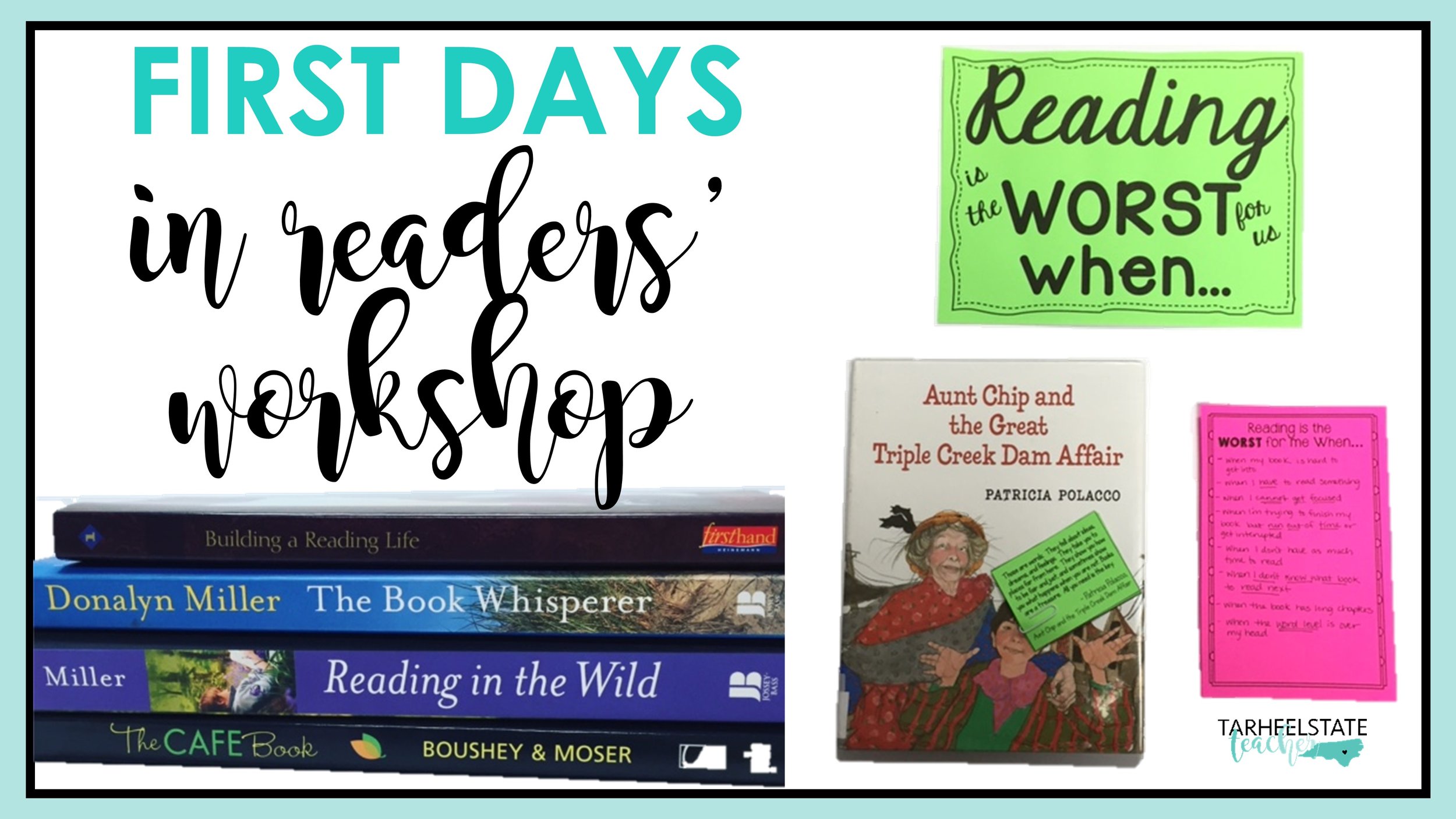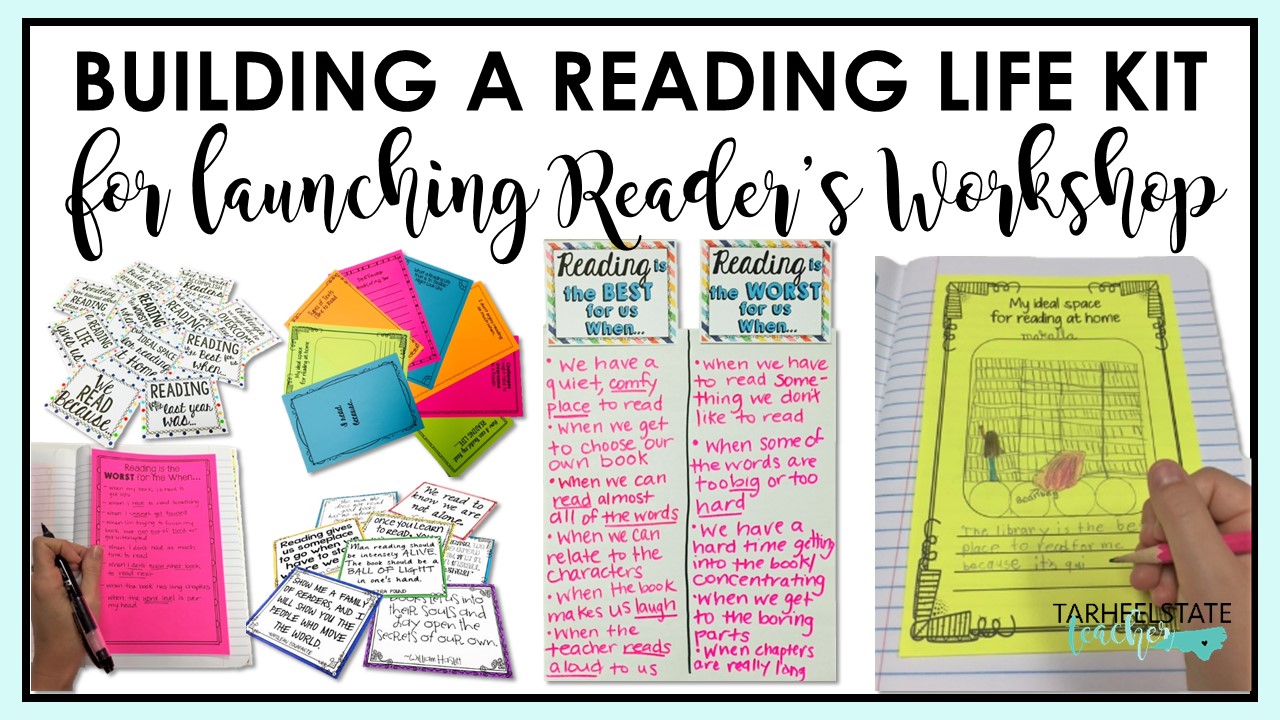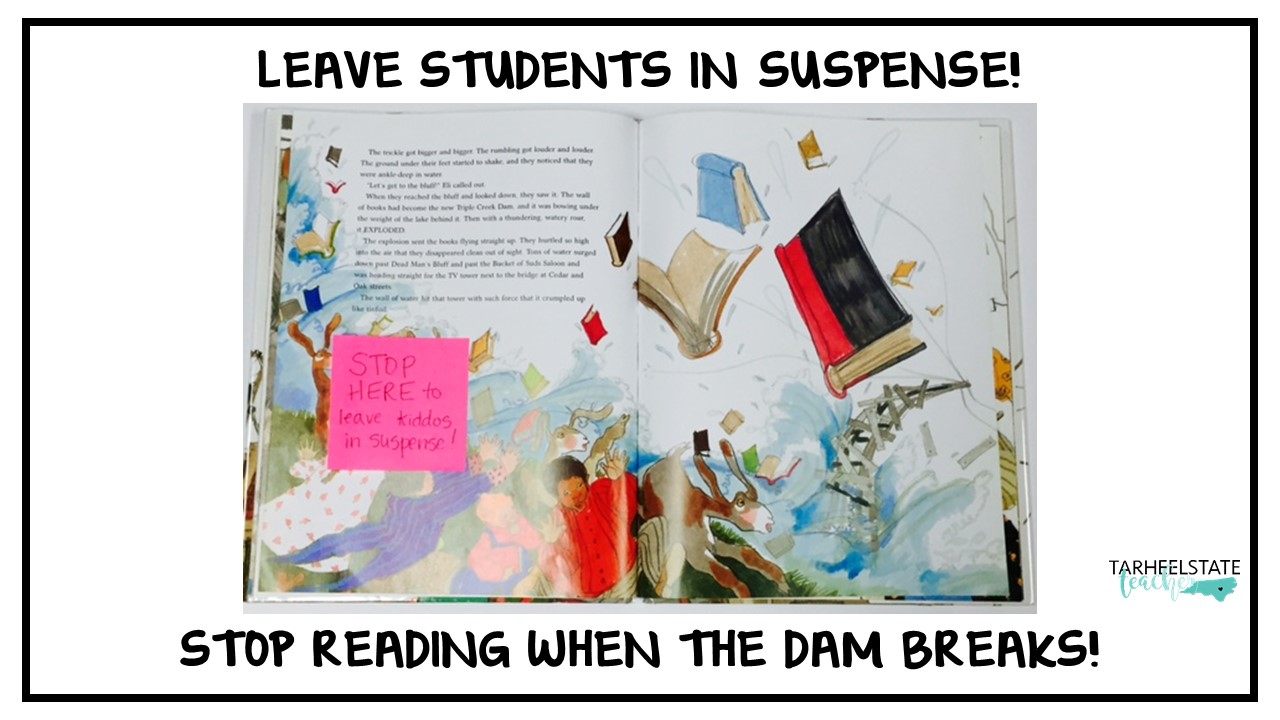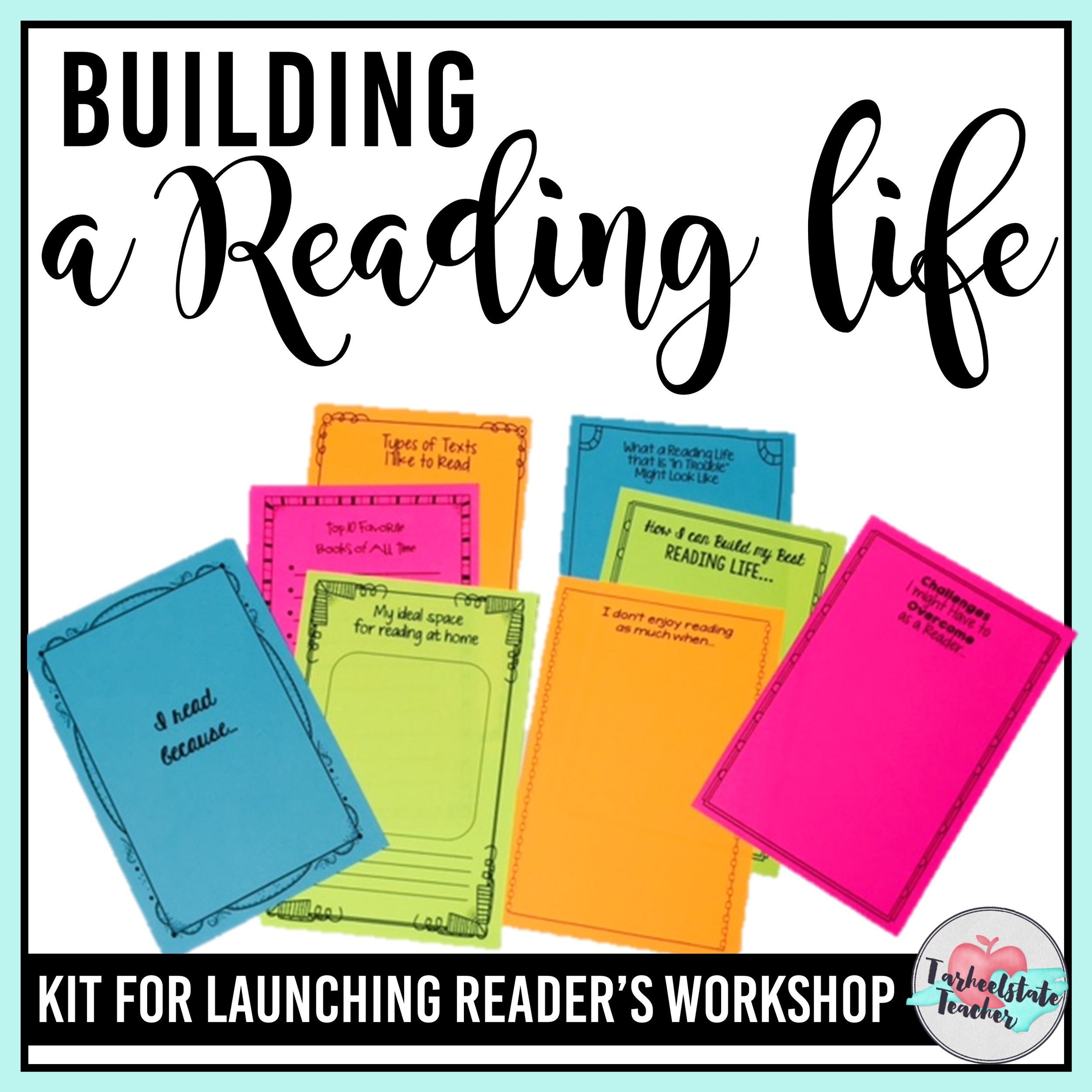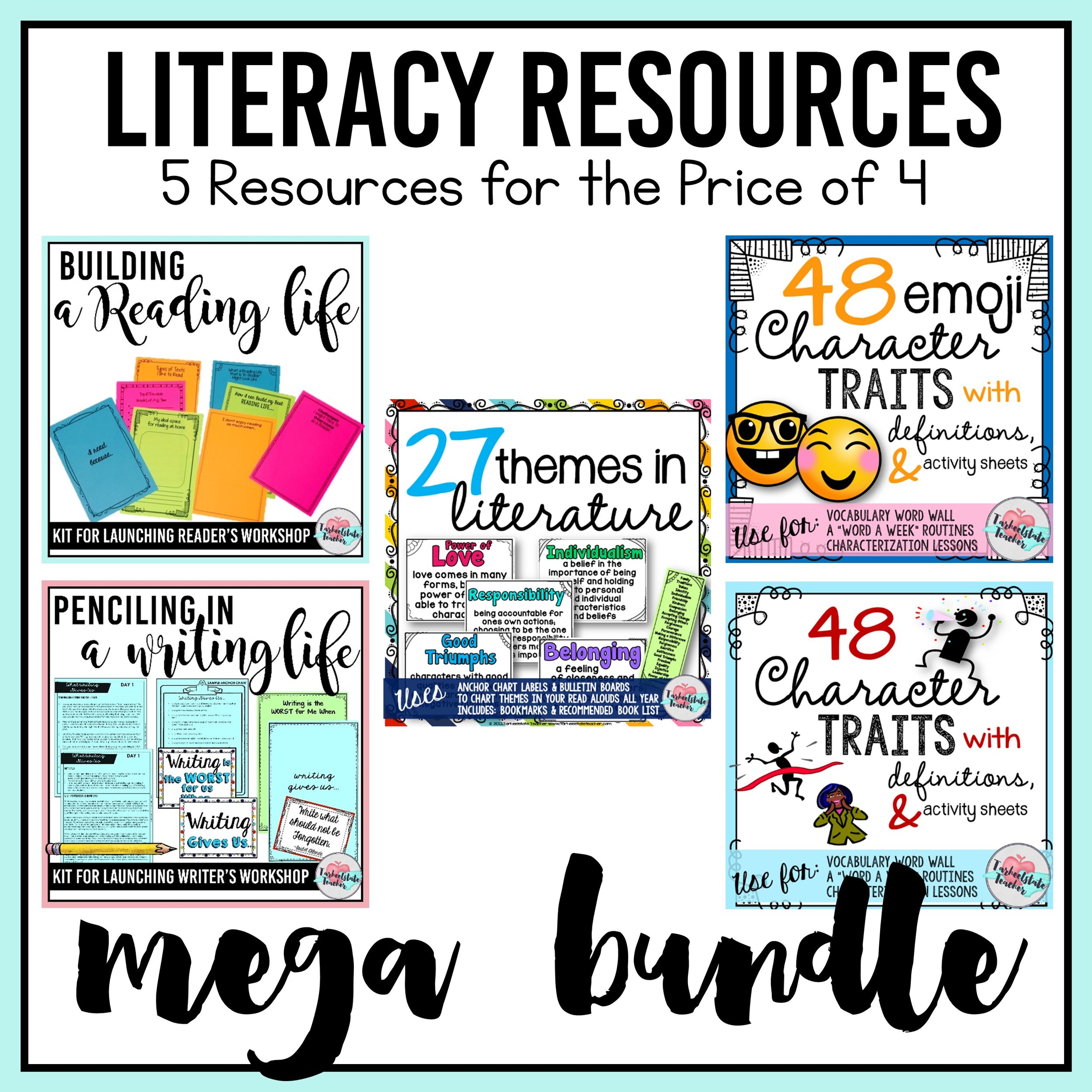Launching the Reading Workshop: Where Do I Start?
Today, I want to share my lessons and goals for the first few days in reading workshop with you. It is going to be the first day of school real soon {maybe some of you are already back in the swing of things!} and you are going to be busy! You will surely have a list a mile long of the things you want to say and accomplish with your students. {I’m.sure.you.don’t.need.a.reminder! Haha!} That's why we're going to discuss how to launch the reading workshop ---let me do the planning for you! :)
Whether I am teaching a new group of 4th graders or 5th graders, I start our year together learning more about my students' reading lives and convincing them that this is the year that they want to have the BEST reading life ever! This is the year they want to carefully and thoughtfully consider how they can be the masters of their own reading life. This is where we start launching the reading workshop.
I use the materials in this "Building a Reading Life Kit" to plan and organize my discussions.
Now, you may want to know that I read to my students 2 or 3 times a day during the first few weeks of school. I have read alouds that help me discuss behavior, morning meeting topics, and of course, for reading in general.
To begin, I bring my students over to the carpet (our meeting area), making sure to train them in how to join me (quickly find a spot, don't worry about who's sitting beside of you, etc.). I have a few special seats in my classroom, so I usually pick students to sit in those randomly by pulling popsicle sticks.
This is a good time to just observe how students come over and the choices they make for seating. {Note, this is probably my second time bringing students to the carpet because earlier, I've taught my "Morning Meeting" lesson that focuses on belonging and I launch that discussion by reading Big Al by Andrew Clements.}
THE FIRST READING LESSON: LEARNING FROM OUR WORST READING TIMES
1) INTRODUCTION/CONNECTION
I start off by saying "Reading is something that is going to be a big deal in our classroom. We are going to share lots of stories with one another. I'm going to read to you every day and you are going to have the opportunity to read independently every day.
Now, some of you are already smiling as I tell you this, but others of you may not feel so excited about all of this reading I'm talking about.
Well, let me tell you, if you are anything like me, you've had your best reading times and you've had some not so good reading times.
I know it's hard to believe, but yes, your teacher, who is crazy about books and loves reading, has had her worst reading times too! You know what, I have some pretty good stories about my WORST reading times, but I'll just tell you one of them."
I have two pretty good stories that I usually tell my students about the worst times in my reading life at some point in the year. On the day I start our discussion about the worst reading times, I usually tell story #1.
MY “WORST” READING TIME STORY #1 : FIRST GRADE
When I was in 1st grade, I was keenly aware that I was a good reader and a good student. I remember overhearing my teacher comment to the assistant about how I could look at the board once and copy a word down.
Well, reading each night was a part of our homework routine. My teacher would pick a book for us and we would report the next morning on whether or not we needed a new book as part of unpacking for our day.
One day she gave me a short stories chapter book. I still remember the look of it. Let's just say it looked like something you might pull out of a dusty box in the basement. Well, I took the book home and tried to read it. It may have been full of fables or fairy tales but the book did not capture my attention.
I took the book to class the next day and told her I had read it all in one night. I remember her looking shocked and asking me questions about the stories. I tried to make up what I could remember from skimming the pages. For sure, I could tell that she knew I was telling a lie. She asked if I was sure that I had read it, and then, instead of accusing me of lying, continuing to probe with questions, or forcing me to re-read the book, she found me another one.
When I tell my students this story, I emphasize a few things--I LIED to my teacher! I did not get to choose my own book, and I did not feel comfortable just telling the truth that I wasn't into the book.
But, at a young age as a kid who loved reading and was good at it, I can remember my WORST reading experience ever! My students can surely relate to having a teacher make them read a book that didn't interest them or was too hard.
MY WORST READING TIME STORY #2 : COLLEGE READING
College was another time that reading was really hard for me. Remember those stacks of history and science textbooks and syllabuses that required hundreds of pages of reading each night? My background knowledge was majorly lacking, I had not yet developed my nonfiction reading skills (no teacher had ever taught me how to highlight strategically and effectively), and I was drowning in reading assignments in addition to the papers and projects to complete.
I tell my students that when I read the lessons in my textbooks, I thought EVERYTHING was important and I thought that I needed to try to remember everything. It was exhausting and it didn't sink in very well.
Now, we have You Tube and Khan Academy to save us from the dread of too much textbook reading! Are these stories DATING me or what?!?!?! (I usually save this story for my "I Don't Enjoy Reading As Much When..." lesson or when I launch my nonfiction unit, so I probably wouldn't share this story on the first day of launching the reading workshop.)
I strongly encourage you to tap into your worst reading times and have at least one story ready that your students would enjoy hearing and that they could relate to.
In Building a Reading Life from Lucy Calkins' Units of Study for Teaching Reading, she tells this story about her worst reading time...
"When I was your age, this girl in my grade--Gretchen Sarnejoki--was into this science fiction series. She carried thick books around like they were the coolest thing. One day, I asked to borrow one of Gretchen's thick books. I couldn't even read the character's names. It was awful. I kept falling asleep. But I carried that book around for weeks, pretending to read it. That was one time when reading was the pits (Calkins, pg 6)."
2) STUDENTS BRAINSTORM WORST READING TIMES
I then lead students to brainstorm some of their WORST reading times. I have printed off half-sized journal pages on bright paper for them to record some of their memories and examples. Students complete a number of journal prompts throughout the first few weeks of school and we add them to our Reading Response journals later in the week when we get them set up.
3) SHARE and RECORD on ANCHOR CHART
I start an anchor chart titled "Reading is the BEST When/Reading is the WORST When" (some years I put these on separate posters to allow for more space).
After students have had some time to think of ideas, I ask volunteers to share what they jotted down. As I record their ideas, I get confirmation from other students in the class that "Yes, reading does stink when that happens."
During this lesson that's focused on my students as readers, I take lots of mental notes about my students' experiences as readers. I can make quite a few assumptions about their current and previous reading lives based on the insight they are able to share with this prompt.
For example, is the child coming up with specific moments that reading stunk for them (like my example, which really is the only elementary example of a bad reading experience that I can think of) or does reading just seem like no fun for a child in general based on what they share?
4) READ ALOUD AUNT CHIP
Next, I lead into my read aloud, Aunt Chip and the Great Triple Creek Dam Affair by Patricia Polacco. I tell students that no matter the reading lives they've had in the past, it is so important for them to make sure that they have a really strong reading life from this day forward and that we are going to spend the first few weeks of school checking on how our reading life is and doing everything we can to make it better!
I tell them "Aunt Chip" is one of my favorite picture books! The people of Triple Creek have an interesting reading life, so let's get started and find out all about it." This book is one of the longer ones I read during the first week of school, so I always break it into two readings. Part of me knows that students have been sitting patiently during this lengthier discussion and the other part of me just loves to build suspense and make them wait to hear the ending.
I read pretty fast during this read aloud. I don't stop too many times to ask questions, because for the most part, students can follow the plot. I do stop to handle any tricky vocabulary or language and ask students to volunteer to explain what was meant or to give us a quick summary of what happened.
Most importantly, I ask students to describe the reading lives of the citizens of Triple Creek.
Students will come to the conclusion that the townsfolk do not have a relationship with reading at all. They have a relationship with their tv's. They LOOOVE television, but they use their books to fill potholes, sit on, eat off of, patch roofs, and even to patch the town dam.
They obviously do not regard books as a treasure, but lucky for them (and Eli, the main character) Aunt Chip hold's books in the highest regard. She says "Books are treasures. All you need is the key!"
I have to silence A LOT of groaning for stopping my read aloud at this point--but really, it has gone on too long, kiddos are tired of sitting although they want to know what happens next, and side conversations and talking out has usually taken over the read aloud at this point. Not to mention, my voice is tired, I've been talking all morning, and probably didn't get enough sleep the night before #firstdayofschooltired!
5) LESSON CLOSURE
To bring this lesson to closure, I re-read what Aunt Chip said about books:

I ask students to just think for a minute about what books mean to them. Think about the ideas, dreams, and feelings a book might inspire. Think about how a book can take them to far away places. And most of all, think about why books are a treasure. Later, I will give students a copy of this quotation to place in their reading journals. But for now, I need to end this lesson short and sweet.
WHY THIS LESSON?
I feel like I've written in abundance about my attitude towards creating a community that loves reading, that cherishes books, and that grows no matter what kind of reader they are. So, you might be wondering why I start my first day of school off by having students tap into the WORST times in their reading lives.
It is so important to gain an understanding of our students as readers as quickly as possible. Yes, I will soon start assessing their oral reading fluency, listening for their word attack skills, and asking comprehension questions…
...but for now, it's important for me to see into their hearts. I need to know what their relationship with reading is like before I can ever begin to truly make a lasting impact on all those other components of reading.
Every bit of insight a child gives me (especially the negative stuff) is AMMO that helps me strategically target my attention as I aim to improve their reading lives. Again, I will tell you that the first few weeks of school are my "sifting" phase. This is where I get to know my readers and sift down all the way to the ones that will be tough nuts to crack. (But, BABY I GOT YOUR NUMBER, don't you worry!)
WHAT COMES AFTER THIS LESSON?
During our second reading life lesson, I gain insights from students about how their reading was the year before and we take time to reflect on when reading has been the BEST for us.
And, oh yes, because I have left them hanging, we will of course have to finish reading Aunt Chip.
After such a long first lesson, I tend to keep the second shorter. This leaves me time for another lesson earlier or later in the day where I teach a reader’s workshop routine or help students set up their reading journals.
The journal pages, anchor chart materials, student-sized quotations, and classroom poster quotations I use for this unit are in my Launching a Reading Life Unit Kit and I've also been working really hard to provide you with an overview of how I sequence each day during my Building a Reading Life Unit. If you want the full details, you can join my newsletter below to get your copy!
CLICK ANY IMAGE BELOW TO HEAD TO THE FULL "Building a Reading Life" Kit
Hopefully launching the reading workshop seems a bit less daunting to you now. It is really one of my favorite times of the year in the classroom!

